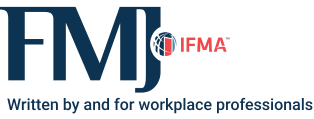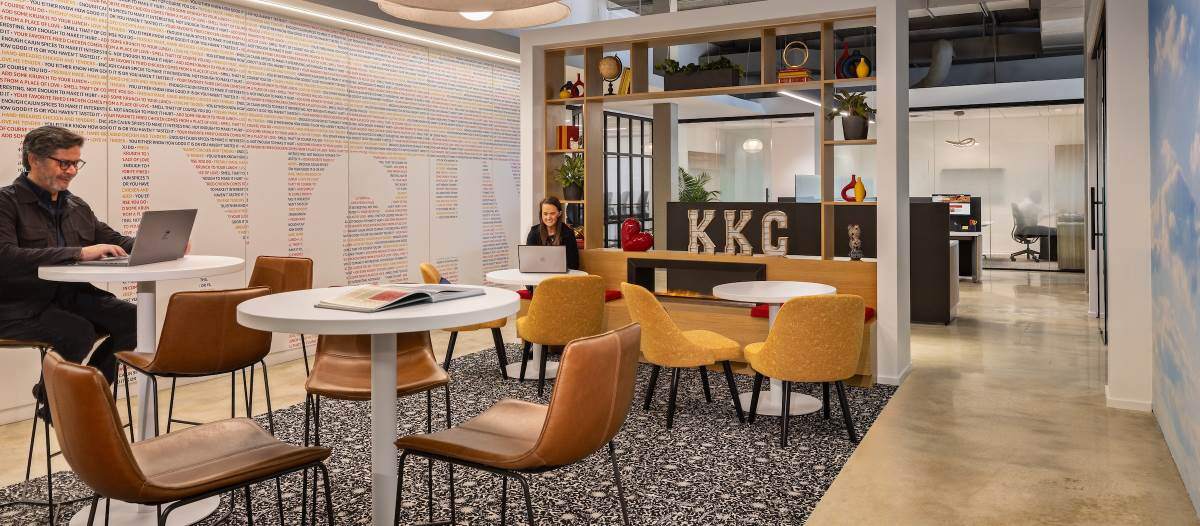In 2009’s “A Walk with Frank Duffy,” he talked about office buildings being vulnerable as they only performed “one trick” which is one of the problems we have today when we need multi-uses. He said space needed “the reinvention of place, the use of place for talk, commerce etc. where change is built-in and that the more we
disperse, the more we need to congregate.” If you read only one of his books, the diminutive Work in the City, is one you will find that his theses are as relevant today as in 2008: new technologies have changed the conventions of space and time (the shearing layers of change), and this is related to the other big changes in terms of the climate and saving our planet.
Here are four books published in 2022 focusing on the changing workplace. Each of the four books in this review have their own perspective on how these same changes that Duffy identified, are affecting the authors’ ideas on this type of place in the built environment.
Two JLL consultants and a research director have written an excellent guide for the C-Suite, The Workplace You Need Now (by Sanjay Rishi, Benjamin Breslau, Peter Miscovich Wiley, 213pp., 2022) based on their combined 75 years of experience in digital transformation and real estate. They divided their book into three descriptions of what the “people-first workplace” should be, which is personalized, responsive and experiential. It is a place where people can gather to find fulfilment, a sense of belonging, opportunities to learn and grow and inspiration where brands are the embodiment of unique cultures. The book identifies that there has been more attention to the workplace by the C-suite than ever before. Case studies from Microsoft, Capital One and Leidos emphasize the authors’ ideas, making this the perfect read for executives to catch up with the latest workplace thinking.
While I don’t necessarily envision the workplace as a ‘product’ which commoditizes it, I applaud the chapter on the new corporate responsibility which is key today with the focus on environmental, social and governance (ESG). However, when describing the importance of sustainability in this book, there is a concentration
on the environment. However, it is the social aspect, even beyond the health and well-being of employees, we need to think about more. It is in the communities where workplaces are located, that we also have a responsibility to serve while supporting the UN’s Sustainable Development Goals (SDGs) for needed results
by 2030.
Another book, Hybrid Workplace (Harvard Business Review HBR Press, 165pp., 2022), written for the same C-suite audience, is a compendium of chapters written by designated authors for Harvard Business Review writing about their advice on this new type of place for work. In the latest McKinsey American Opportunity Survey (June 2022), it is estimated that 80 million workers are taking advantage of hybrid working. The book’s practitioners and consultants cover the approaches taken by
IT (Cisco), HR (Gartner), and FM/CRE (Steelcase and Gensler) experts. They describe the “borderless office” which is an ecosystem of spaces consisting of hubs in major cities, satellite locations where project teams can meet utilizing advanced videoconferencing and shared offices near transportation hubs for easy access in this move from one fixed place to a variety of flexible options. One excellent chapter on Management and Culture describes the prioritization of empathy, the negative effects of power dynamics and the need for workers to feel safe, not only physically, but psychologically.
As the cover photo for The Workplace Zoo (by Nigel Oseland Routledge, 213pp., 2022) illustrates, the worker with his hands pressed to the glass standing next to a large HELP sign is indicative of the pre-pandemic knowledge worker caged in the ubiquitous glass and steel box high rise reaching out to the world beyond his enclosure.
The Workplace Zoo has been written about the problems with existing workplaces (like cube farms) and offering a solution to this nearly 50-year old design that most of us experience and one reason there is reluctance to return to it. In Oseland’s experience as a UK consultant and researcher, his solution reaches back to a concept created in the 1950s-60s called Burolandschaft. This was a type of open plan which favored desks arranged in a scattered organic pattern with plants and screens providing occasional boundaries. Looking at the floorplan of Facebook’s (now Meta’s) headquarter design when it opened a few years ago, you will view a revival of the Burolandschaft floorplan.
Oseland calls his version the landscaped office which is a riff on the earlier version. He draws from interdisciplinary research on “psychophysics, psychology, physiology, sensory design, anthropology, sociology, philosophy, neuroscience, economics, architecture, inclusivity and zoology” to create his landscaped office. In this design, the workplace consists of:
-
A layout that is flexible and adaptable to changing requirements;
-
Work-settings that provide different types of configurations;
-
Interior design based on agile working, activity-based work, new ways of work, and smart, remote and hybrid work;
-
Environmental conditions like biophilic design and outdoor working areas.
He illustrates what a floorplan in the landscaped office would look like which includes: a circle-like arrangement at the center of the plan with a plant in the middle surrounded by different types of informal and banquet seating, a kitchen and gaming areas with a section for amphitheater stepped seating. Surrounding this circle
are team zones, meeting rooms, focus pods and booths, touchdown spaces, carrels, stand-up desks, lockers and a multi-media hub. What differentiates it from the earlier version is more varied height partitions, more structured yet varied placement of furniture, and strict attention to acoustic requirements.
Never in the history of workplaces has there been so much attention on the office by the media which woke up to the issue during the pandemic induced lockdown. Workers stayed home for longer than they were expected and yet continued to perform well to the surprise of many CEOs. Even Wall Street continued to function.
The question then came up, why not release the caged human to the ‘wild’ and let them decide where they want to work? In fact, in the previously mentioned McKinsey study, they reported that 58 percent of 25,000 workers can work at home one day per week and 35 percent five days per week which represents a “tectonic shift” in the working world.
The final book, Work Better. Save the Planet (by Lisa Whited, 117 pp., 2022) focuses on one of the most important aspects of the workplace, it's sustainability. Since the built environment is responsible for almost 40 percent of the energy use and 36 percent of the carbon emitted into the atmosphere, as Duffy predicted, this is a critical aspect of the new workplace. Author Lisa Whited, an active IFMA member, conceives of the ‘earth-first workplace’ based on seven tenets she names PLLANET to replace the ‘obsolete workplace’ of today. While her Venn diagram of the sweet spot of workplace transformation includes the intersection of FM/CRE,
HR, Leadership and Vision, she does forget IT. And an example of an exercise headlined “CRE is no longer about brick and mortar” is questionable because the built environment is what we still turn to most of the time we work out of the office, be it a café, hotel bar, club room or our own home when not a virtual workspace. What
is very valuable to FMs however, are her case studies and exercises.
The last two days (June 23 & 24) I was listening to the amazing rooster of speakers during the IFMA Foundation's Virtual Summit on FM and the SDGs which brought Duffy's earlier comments to mind on technology and sustainability. As a creator of the event, along with my partner in crime, Executive Director of the Foundation,
Diane Levine, we tried out a new technology to bring this interactive session to life more than a Zoom meeting. With the REMO platform (thanks to John Reeves in the shot of the virtual Summit space below), attendees could choose to sit at tables or couches and chat with other participants as they work in their breakout sessions.
FM enthusiasts came to this Summit from all over the world, but kept a low carbon footprint as they listened and commented on the speakers who talked about critical issues in the changing workplace like selling FM sustainable work, including ESG, to the C-suite (Tensie Whelan’s ROSI model); learning about the new technologies to work with (Earthshot’s new cleantech portal and University College London’s digital twins research); providing needed services to that part of the workforce we often forget about, the janitors who maintain our workplaces, and servicing the communities both inside and outside of our workplaces that make
up the S in ESG.
t is these issues about how changing work practices (processes) are affecting all places of work, including our homes and center cities, how new virtual technologies integrate with physical places and the acknowledgement of our workplace neighbors, as well as our own workforce (people), that I hope to read more about when
we explore future books on regeneration and the changing “re” of our workplaces: “rebuilding, restoring, redesigning, recreating, recycling and rewilding,” which could be “a manifesto for the future” (Alan Moore, 2021*).

Nancy Sanquist, IFMA Fellow, is a professional involved in the built environment for the last few decades. She is the Past Chair of the IFMA Foundation, with which she has worked for the last six years. She is a co-founder of the Global Workforce Initiative (GWI) and the Workplace Evolutionaries, and is the author of many articles and co-editor of books on FM/CRE, technology, architecture, urban planning and maintenance including the award-winning book series titled “Work on the Move (1&2).” She is working on a new book on “Reimagining Place in the 21st Century.”
Read more on Workplace
Explore All FMJ Topics










